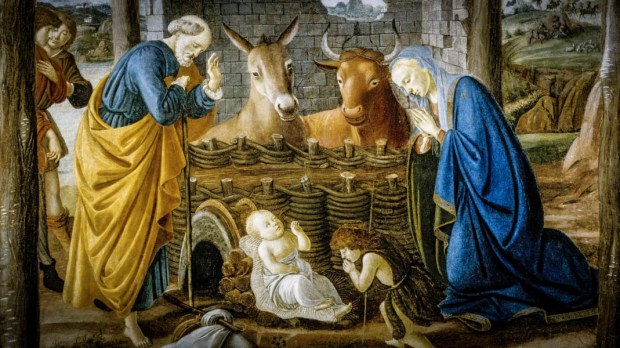The Christmas story is very familiar to many of us, and the familiarity of certain images can cloud our view of what actually happened more than 2,000 years ago. In particular, there is a common narrative that depicts Joseph pounding on doors trying to find a place where Mary can give birth to Jesus.
The owner of the local Motel 6 slams the door in Joseph’s face, saying that there is “no vacancy.” Then Joseph finally finds a stable where animals are kept and brings Mary to the humble place just in time for Jesus’ arrival.
While it is an engaging story, it doesn’t match-up with the biblical account and the original Greek text.
Luke sets the stage, “And she gave birth to her first-born son and wrapped him in swaddling cloths, and laid him in a manger, because there was no place for them in the inn” (Luke 2:7).
The last word in that passage, “inn,” is what usually fosters the narratives as described above. However, the English word is not a full translation of the Greek.
Guest room
The word used in the original text is kataluma and is best understood as a “guest room,” not a type of commercial inn used for travelers. For that type of lodging Luke uses the word pandokheion. Additionally, Bethlehem was Joseph’s “hometown” and he likely had relatives to stay with.
Even more to the point, very few people would want to give birth in a type of public motel. Inns at that time did not have a good reputation and Mary would have wanted privacy for such an intimate event.
Furthermore, a close reading of the text suggests that Joseph and Mary had been in Bethlehem for a number of days before her birth.
And Joseph also went up from Galilee, from the city of Nazareth, to Judea, to the city of David, which is called Bethlehem, because he was of the house and lineage of David, to be enrolled with Mary, his betrothed, who was with child. And while they were there, the time came for her to be delivered. (Luke 2:4-6)
According to Luke, the holy couple were already staying in Bethlehem when Mary went into labor. In other words, they weren’t rushing to find somewhere to stay on Christmas Eve, but looking for a proper place with enough space and privacy for the birthing process.
Since the census forced everyone to come back home, the “inn” or “guest room” was full. Mary and Joseph had to find another place.
Peasant homes included a stable
Archeological studies can help paint a better picture of what a house in Bethlehem looked like and where Mary likely gave birth.
A typical Judean house of that day consisted of an area near the door, often with a dirt floor, where the family’s animals were kept at night—so they wouldn’t be stolen or preyed upon and so their body heat could help warm the home on cool nights. The family lived and slept in a raised part of the same room set back from the door. There was also usually a guest room either upstairs on a second floor or adjoining the family common room on the lower floor. Typically the lower area near the door had a manger for food and/or water for the animals.
Another description explains how “houses in Bethlehem and its vicinity often had caves as the back of the house where they kept their prized ox or beast of burden, lest it be stolen. The guest room was in the front of the house, the animal shelter in the back.”
So instead of delivering the Child in a place where other guests were staying, Mary gave birth in a more private area where the animals were kept and laid Jesus in the feeding trough that was there.
This historical rendering of the biblical account is quite different from the narrative many of us grew up with, but it doesn’t diminish the humility of Christ’s birth. Jesus was still born in a place where animals were kept, in a simple peasant cave in Bethlehem. It remains a beautiful scene that changed the world forever.
Read more:
How Did the Star of Bethlehem Appear? What Science Tells Us and the Saints
Read more:
When was the first Christmas?

